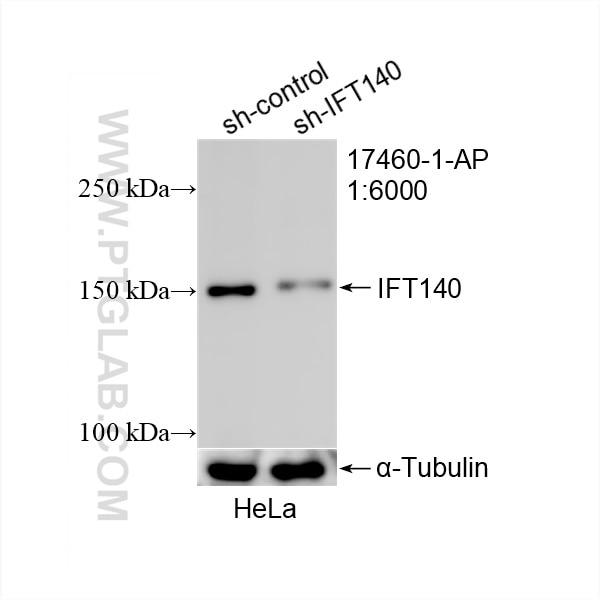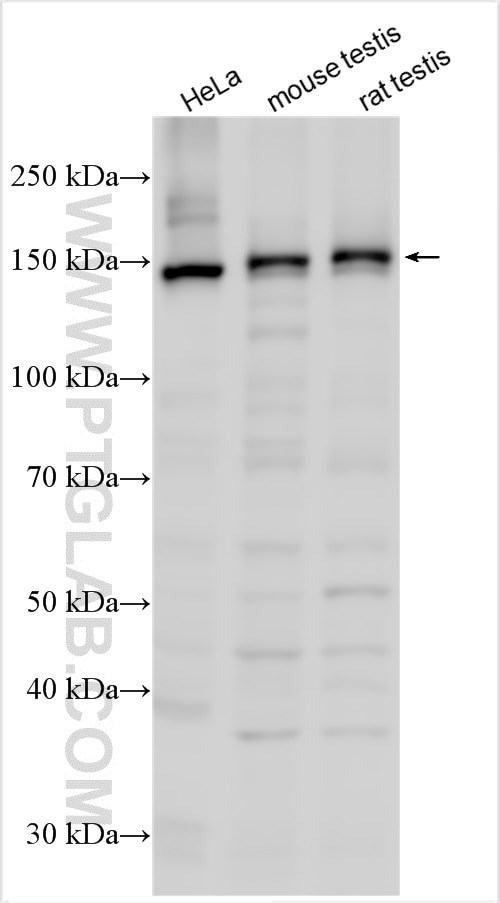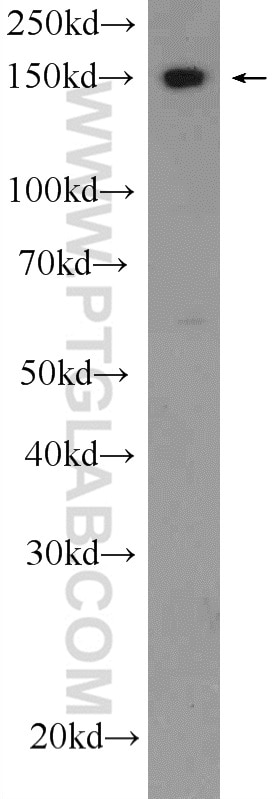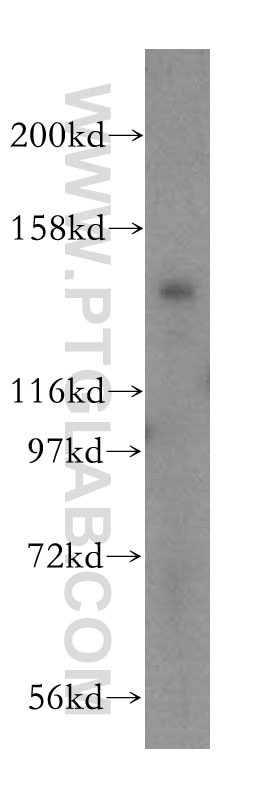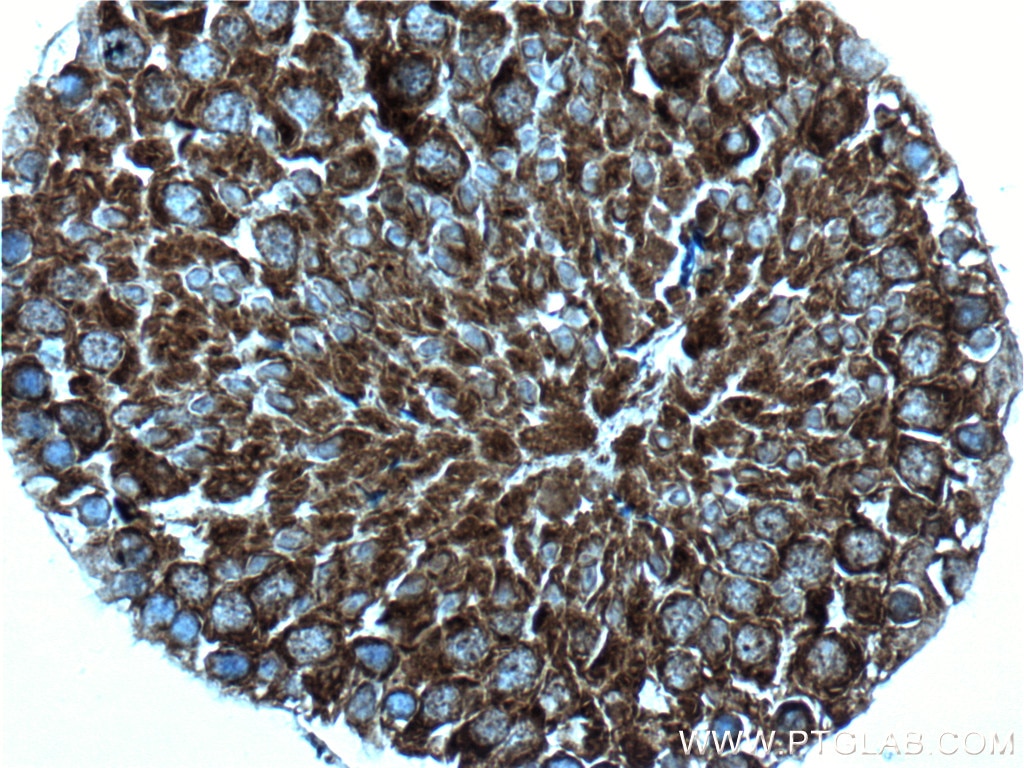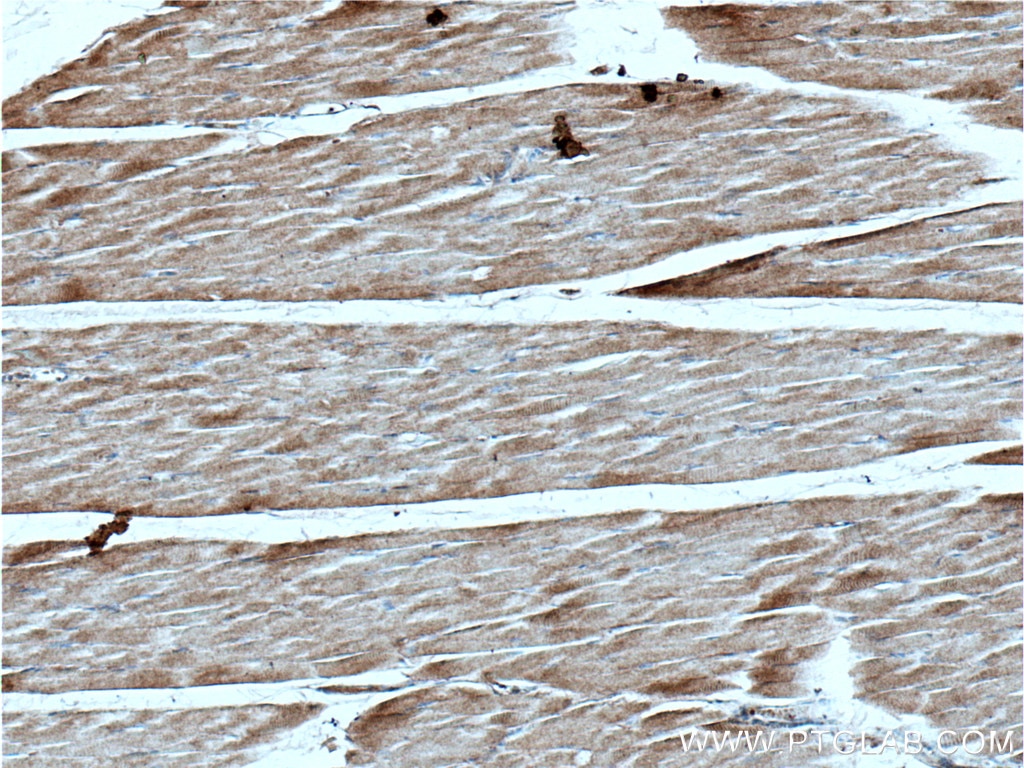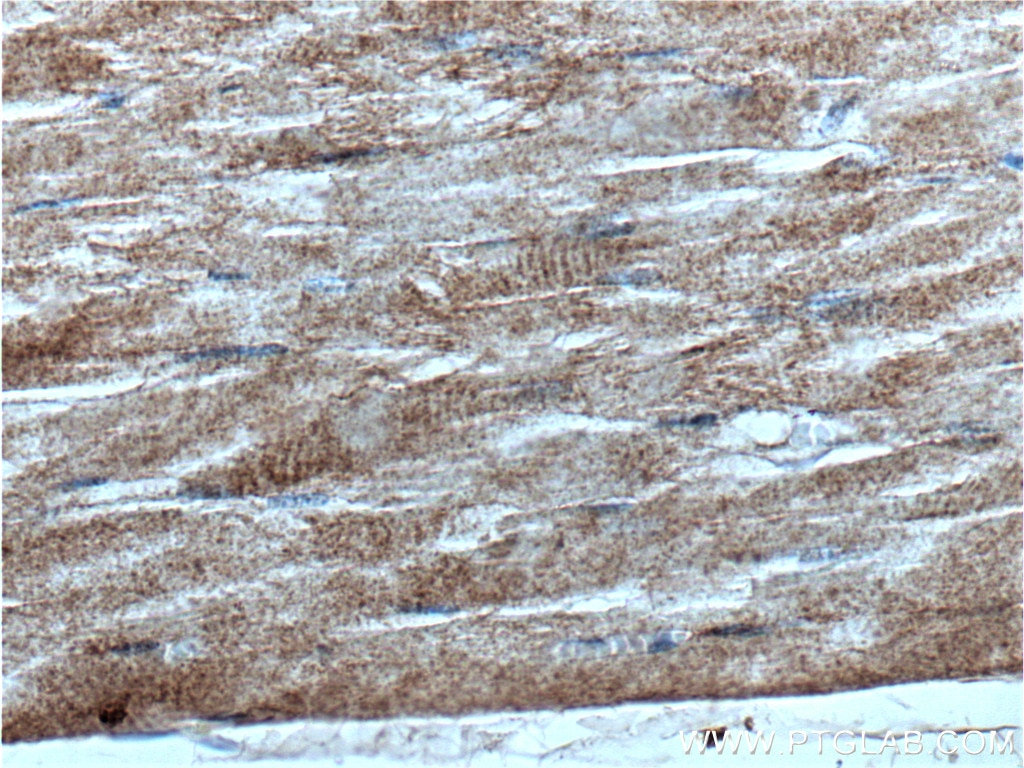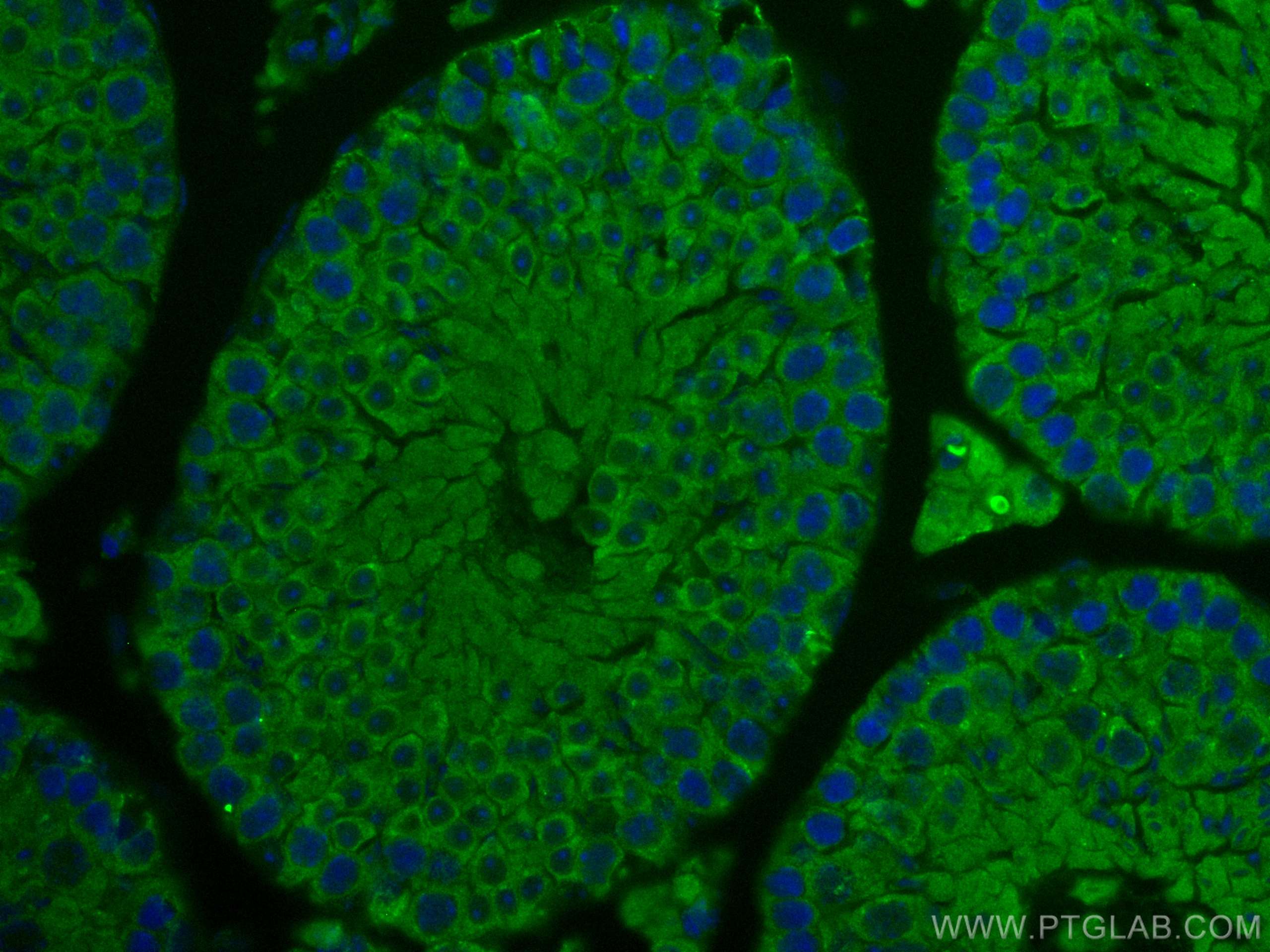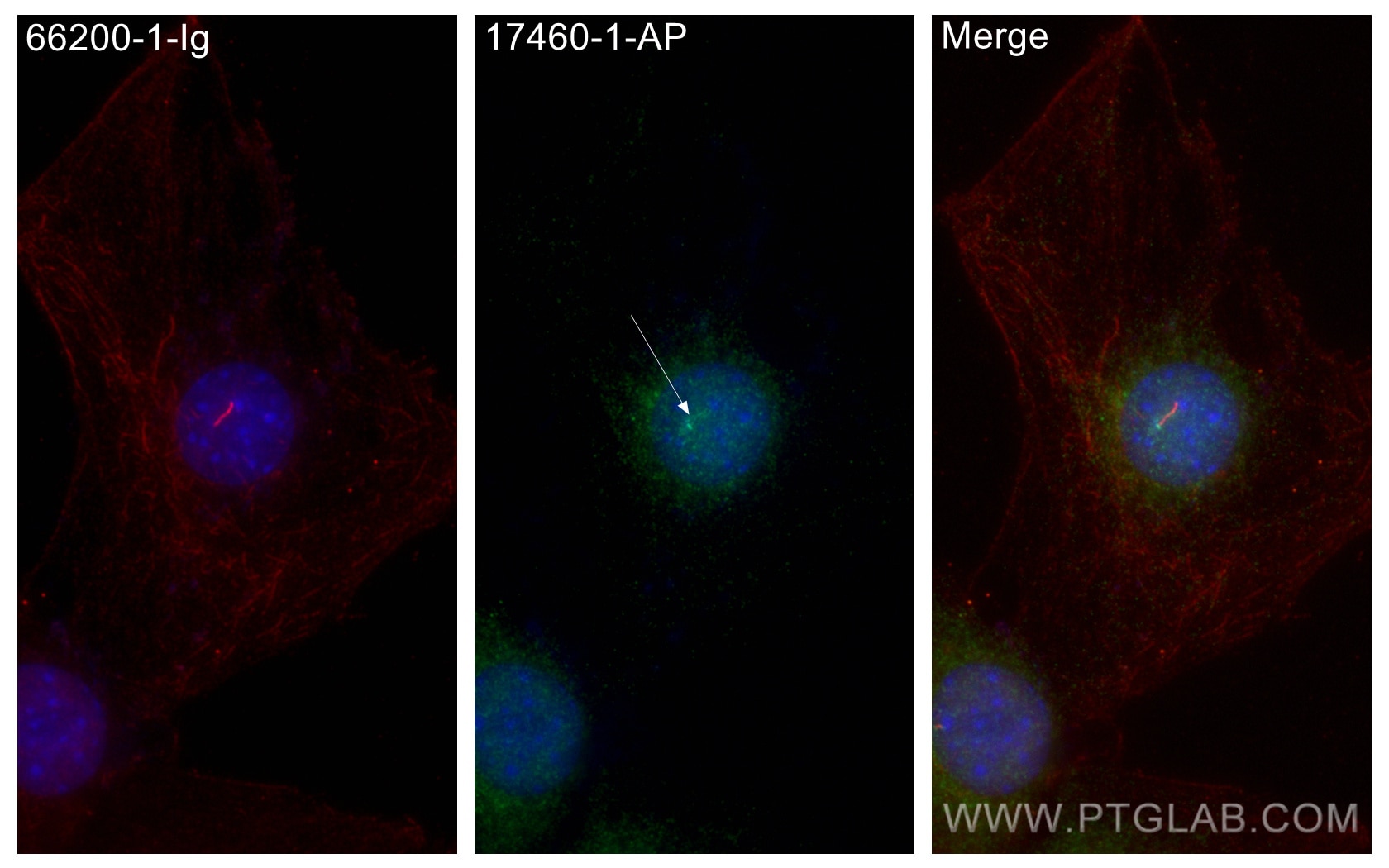- Phare
- Validé par KD/KO
Anticorps Polyclonal de lapin anti-IFT140
IFT140 Polyclonal Antibody for WB, IHC, IF/ICC, IF-P, IP, ELISA
Hôte / Isotype
Lapin / IgG
Réactivité testée
Humain, rat, souris et plus (2)
Applications
WB, IHC, IF/ICC, IF-P, IP, CoIP, ELISA
Conjugaison
Non conjugué
N° de cat : 17460-1-AP
Synonymes
Galerie de données de validation
Applications testées
| Résultats positifs en WB | cellules HeLa, cellules HepG2, tissu testiculaire de rat, tissu testiculaire de souris |
| Résultats positifs en IP | tissu testiculaire de rat |
| Résultats positifs en IHC | tissu testiculaire de souris, tissu de muscle squelettique humain il est suggéré de démasquer l'antigène avec un tampon de TE buffer pH 9.0; (*) À défaut, 'le démasquage de l'antigène peut être 'effectué avec un tampon citrate pH 6,0. |
| Résultats positifs en IF-P | tissu testiculaire de souris, |
| Résultats positifs en IF/ICC | cellules C2C12, |
Dilution recommandée
| Application | Dilution |
|---|---|
| Western Blot (WB) | WB : 1:1000-1:6000 |
| Immunoprécipitation (IP) | IP : 0.5-4.0 ug for 1.0-3.0 mg of total protein lysate |
| Immunohistochimie (IHC) | IHC : 1:50-1:500 |
| Immunofluorescence (IF)-P | IF-P : 1:200-1:800 |
| Immunofluorescence (IF)/ICC | IF/ICC : 1:400-1:1600 |
| It is recommended that this reagent should be titrated in each testing system to obtain optimal results. | |
| Sample-dependent, check data in validation data gallery | |
Applications publiées
| KD/KO | See 3 publications below |
| WB | See 26 publications below |
| IHC | See 4 publications below |
| IF | See 63 publications below |
| IP | See 1 publications below |
| CoIP | See 1 publications below |
Informations sur le produit
17460-1-AP cible IFT140 dans les applications de WB, IHC, IF/ICC, IF-P, IP, CoIP, ELISA et montre une réactivité avec des échantillons Humain, rat, souris
| Réactivité | Humain, rat, souris |
| Réactivité citée | canin, Humain, poisson-zèbre, souris |
| Hôte / Isotype | Lapin / IgG |
| Clonalité | Polyclonal |
| Type | Anticorps |
| Immunogène | IFT140 Protéine recombinante Ag11119 |
| Nom complet | intraflagellar transport 140 homolog (Chlamydomonas) |
| Masse moléculaire calculée | 1462 aa, 165 kDa |
| Poids moléculaire observé | 150-165 kDa |
| Numéro d’acquisition GenBank | BC035577 |
| Symbole du gène | IFT140 |
| Identification du gène (NCBI) | 9742 |
| Conjugaison | Non conjugué |
| Forme | Liquide |
| Méthode de purification | Purification par affinité contre l'antigène |
| Tampon de stockage | PBS with 0.02% sodium azide and 50% glycerol |
| Conditions de stockage | Stocker à -20°C. Stable pendant un an après l'expédition. L'aliquotage n'est pas nécessaire pour le stockage à -20oC Les 20ul contiennent 0,1% de BSA. |
Informations générales
IFT140 is a subunit of intraflagellar transport complex A (IFT-A) which is involved in retrograde ciliary transport. RT-PCR analysis showed it is highly expressed in kidney, moderately in ovary, testis, prostate, and lung. IFT140 is localised to the base and tip of primary cilium. IFT140 has a pivotal role in development and function of ciliated cells, and mutations of IFT140 cause skeletal, renal, and retinal ciliopathies. It had been detected as a single band around 140-165 kDa in different reports. (PMID: 20368623, 22282595)
Protocole
| Product Specific Protocols | |
|---|---|
| WB protocol for IFT140 antibody 17460-1-AP | Download protocol |
| IHC protocol for IFT140 antibody 17460-1-AP | Download protocol |
| IF protocol for IFT140 antibody 17460-1-AP | Download protocol |
| IP protocol for IFT140 antibody 17460-1-AP | Download protocol |
| Standard Protocols | |
|---|---|
| Click here to view our Standard Protocols |
Publications
| Species | Application | Title |
|---|---|---|
Nat Genet Mutations in PLK4, encoding a master regulator of centriole biogenesis, cause microcephaly, growth failure and retinopathy. | ||
Cell Dynamic Remodeling of Membrane Composition Drives Cell Cycle through Primary Cilia Excision. | ||
Hepatology Biallelic mutations in TTC26 (IFT56) cause severe biliary ciliopathy in humans. | ||
Sci Adv Ciliopathy protein HYLS1 coordinates the biogenesis and signaling of primary cilia by activating the ciliary lipid kinase PIPKIγ. | ||
Nat Commun A distal centriolar protein network controls organelle maturation and asymmetry. | ||
Nat Commun Kinesin-2 and IFT-A act as a complex promoting nuclear localization of β-catenin during Wnt signalling. |
Avis
The reviews below have been submitted by verified Proteintech customers who received an incentive for providing their feedback.
FH Charlotte (Verified Customer) (07-18-2024) | I tested the antibody in iF in LIGHT2 cells (commonly used to study Hh signalling). Unfortunately, I don't see the ciliary signal when overlapping IFT140 with ARL13B. This could be cell type specific or the conditions must be optimized to reveal it ? I used the standard iF protocol: PFA 4% 10 min cold methanol 5 min 1h 1% BSA in PBST 1/500 in blocking solution, O.N. at 4°C 5*5min PBST 1/500 in blocking solution, 1h at RT° 4*5min PBST + 5min PBS
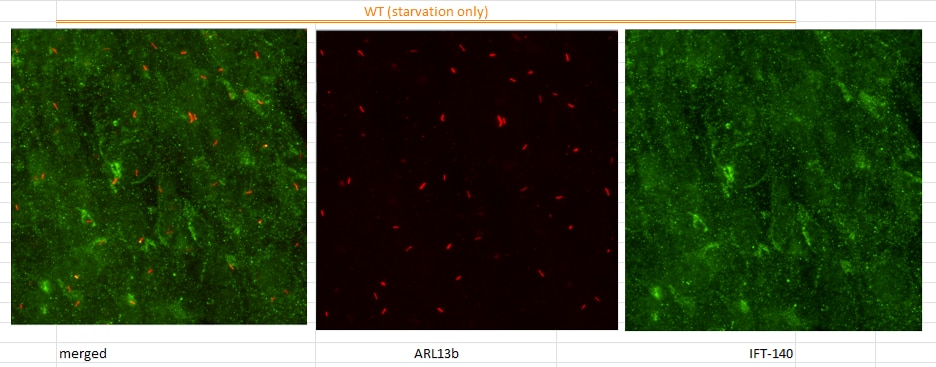 |
